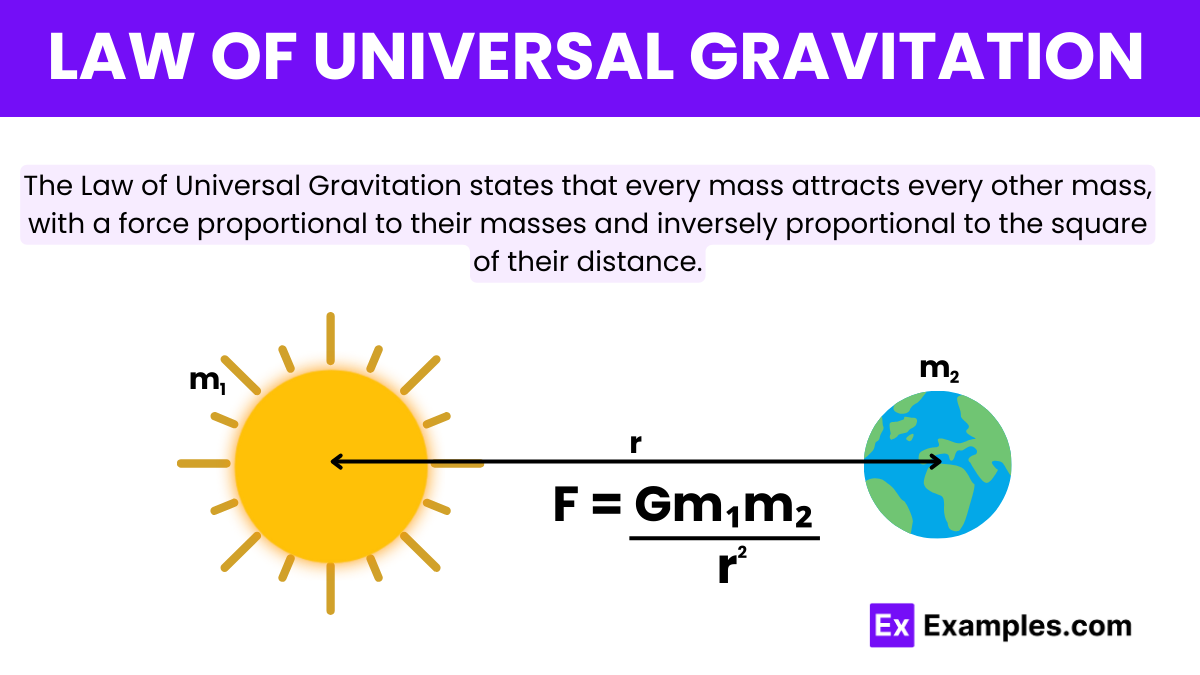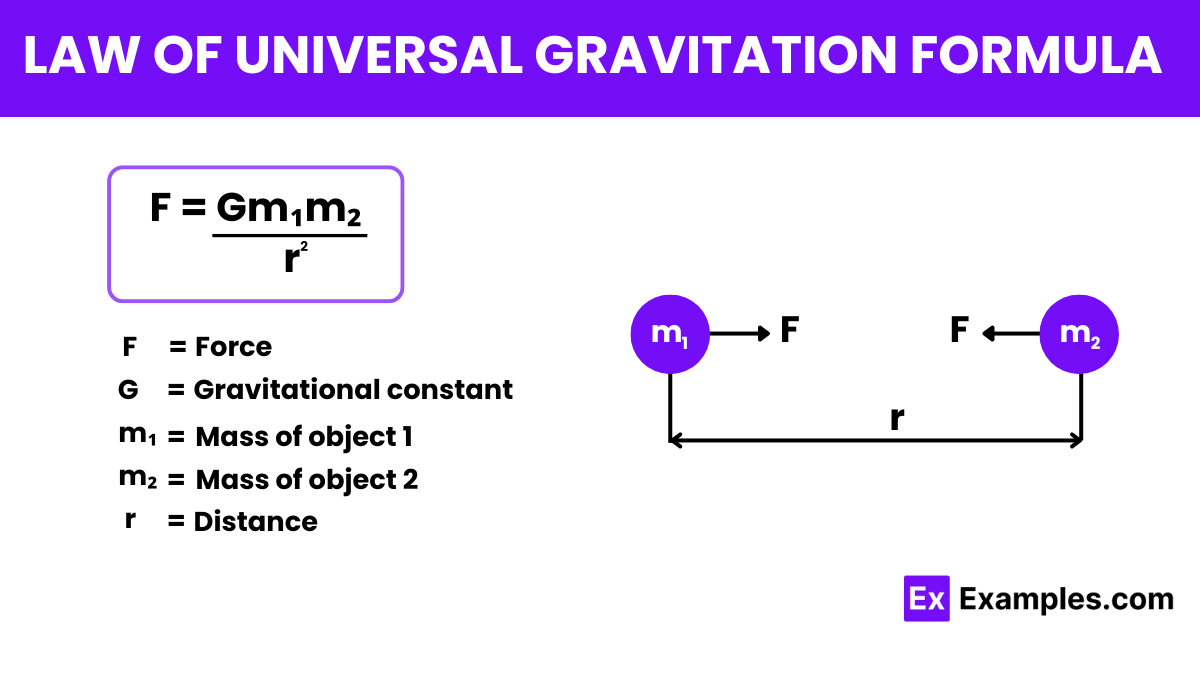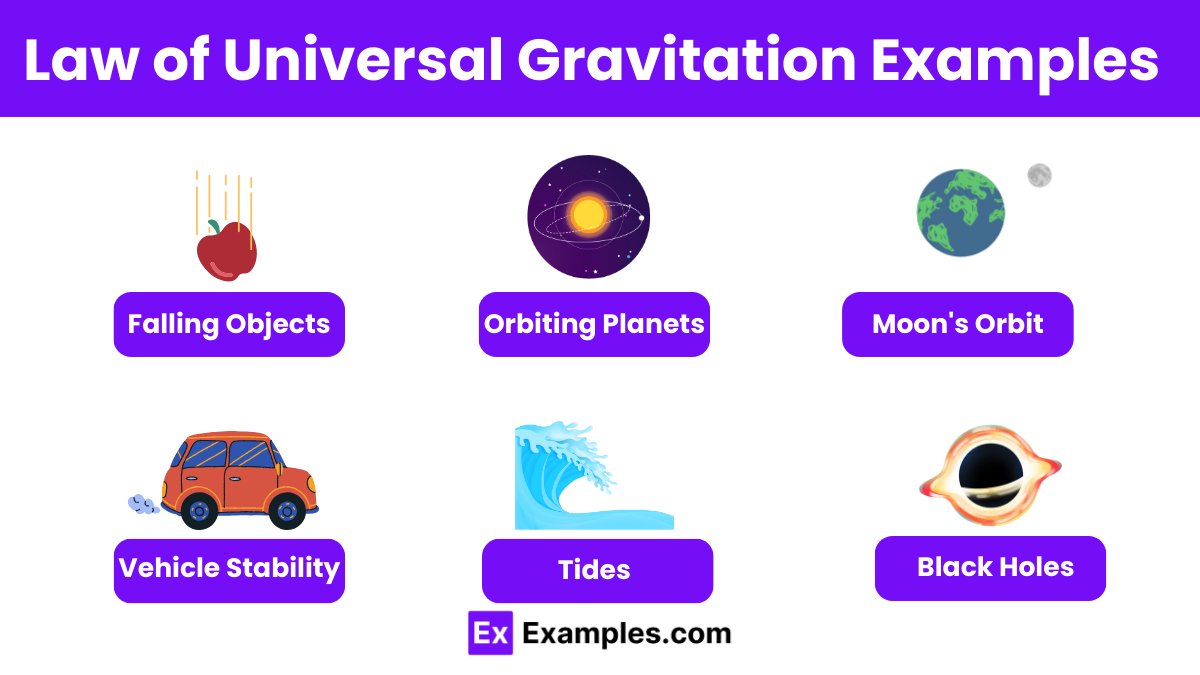What is the formula for the Law of Universal Gravitation?
F = Gm₁m₂/r
F = Gm₁m₂/r²
F = Gm₁/r²
F = Gm₂/r²


The Law of Universal Gravitation is a vital principle in physics, especially within the laws of mechanics. It tells us that every object in the universe pulls on every other object with a force. This force depends on two things: the masses of the objects and the distance between them. Specifically, the force increases as the masses increase and decreases as the distance between the objects grows. Discovered by Sir Isaac Newton, this law is essential for understanding many of the laws of physics, including why planets orbit the sun and why objects fall to the ground on Earth. It’s a foundational concept that helps us understand the forces at work in the universe.

The formula for the Law of Universal Gravitation is
Here’s what each symbol represents:
In this formula, the force is described as being attractive (pulling the two masses together), and the direction of the force is always along the line connecting the centers of the two masses. This means if m₁ is considering the force it experiences due to m₂, then r̂ points from m₁ towards m₂, and vice versa, ensuring that the force is always attractive, pulling the two objects together. This vector form is crucial for accurately describing the dynamics of celestial bodies and any system where gravitational interactions are significant.
The gravitational field (𝑔⃗) of an object is defined as the gravitational force per unit mass exerted at a point in space due to the presence of the mass. It provides a way to describe how strong the gravitational pull is at different points around the object, without needing to consider the specific properties of a second object being acted upon.
Mathematical Expression:
Where:
In this formula, the negative sign indicates that the field vector points towards the mass M creating the field, reflecting the attractive nature of gravity. This field is what causes other masses that enter into the space around M to experience a gravitational force. The strength of the gravitational field decreases with the square of the distance from the mass, meaning it weakens as you move further away from the source mass.
The Universal Gravitational Constant, often represented by the symbol G, is a key number we use to calculate the gravitational force between two objects. This constant helps us figure out exactly how strong the pull of gravity is. Imagine you want to find out how much force is pulling between two planets or between a planet and a star. To do this, you multiply their masses and then divide by the square of the distance between them. After that, you multiply the result by G to get the force of gravity.
In numbers, the value of G is approximately
cubic meters per kilogram per second squared (m³ /kg/ s²). This might sound really small, but it’s the perfect amount to calculate the vast forces acting over the huge distances in space. Using G, we can predict how planets will orbit the sun, how moons orbit their planets, and even how astronauts need to move in space to go from one place to another. It’s like a universal rule that all objects in the universe follow when it comes to gravity.

Universal Gravitation is a law that mathematically describes the gravitational force but does not explain the underlying cause.
The Universal Law of Gravitation is not wrong but limited. It does not explain certain phenomena like the orbit of Mercury, which General Relativity does.
Laws describe what happens; theories explain why. The Law of Gravity describes gravitational forces but does not explain their underlying nature.
Text prompt
Add Tone
10 Examples of Public speaking
20 Examples of Gas lighting
What is the formula for the Law of Universal Gravitation?
F = Gm₁m₂/r
F = Gm₁m₂/r²
F = Gm₁/r²
F = Gm₂/r²
What does the constant G represent in the Law of Universal Gravitation?
Acceleration due to gravity
Gravitational constant
Gravitational field strength
Gravitational potential
How does the gravitational force between two objects change if the distance between them is doubled?
It doubles
It is halved
It becomes four times greater
It becomes one-fourth as great
Which of the following is directly proportional to the gravitational force between two objects?
The distance between them
The square of the distance between them
The product of their masses
The sum of their masses
What happens to the gravitational force between two objects if the mass of one object is tripled?
It remains the same
It is halved
It triples
It becomes one-third as great
How does the gravitational force change if both masses are doubled but the distance remains the same?
It remains the same
It is halved
It doubles
It becomes four times greater
Which of the following statements about the gravitational force is true?
It can be repulsive or attractive
It acts only between objects on Earth
It is always attractive
It does not depend on the mass of the objects
What happens to the gravitational force if the distance between two objects is reduced to one-third of its original value?
It becomes one-third as great
It becomes nine times greater
It becomes three times greater
It remains the same
If the mass of one object is halved, how does the gravitational force between two objects change?
It doubles
It is halved
It remains the same
It becomes one-fourth as great
What is the relationship between gravitational force and distance in the Law of Universal Gravitation?
Directly proportional
Inversely proportional
Inversely proportional to the square of the distance
Directly proportional to the square of the distance
Before you leave, take our quick quiz to enhance your learning!

